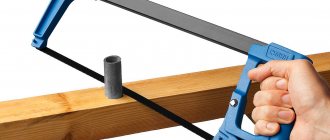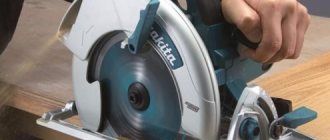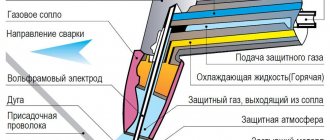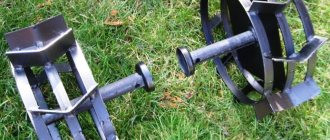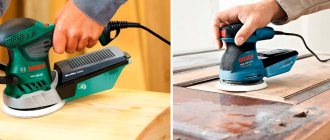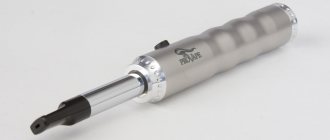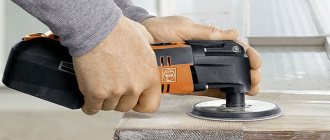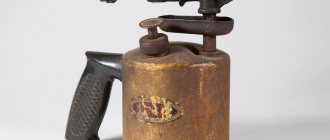How to choose a hacksaw for wood
The choice of saw, whether for gardening work or for repair and construction purposes, should be approached responsibly. After all, if you buy the wrong tool, at best there will be difficulties in working, it will be difficult to achieve the desired result, and at worst there is a risk of injury.
Experienced carpenters advise paying attention to the working surface of the hacksaw - the blade. Before purchasing, be sure to find out what kind of steel is used in the saw. A blade with good hardening and correctly sharpened teeth will be much more effective in use than a tool with a poor working base.
A hand saw is without a doubt a necessary tool in the household.
There are different types of hacksaws for woodworking, which differ in many ways. For example, the ease of sawing and the service life of a hacksaw depend on the blade. In total, when buying a hacksaw for wood, you should pay attention to three components:
- Blade (steel grade, length);
- Teeth (their size, shape, distance between them);
- Handle model.
Length and size of the canvas
You need to choose a hacksaw for wood based on your needs: for cutting small, not large building materials, a 300 mm hacksaw is enough. If the purpose of the purchase is repair, use in the country, or, especially, construction, it is advisable to choose a saw with a base of 450 - 500 mm. Also, we must not forget about the “golden rule” of choosing a hacksaw: the length of the tool must be at least twice as long as the workpiece being cut.
The most common hacksaws - with blade lengths from 350 to 600 mm - are medium sizes. It is believed that up to thirty-five centimeters these are mini-saws, and over 60 cm – large ones. The success of working with wood depends on the correct choice of blade length.
If you take a tool that is shorter than optimal, you will have to put more effort into cutting. By choosing a blade that is too long, the saw will spring back and also create additional difficulties.
Classic hacksaw with a comfortable and ergonomic handle
Tooth size and shape
This property of the saw affects the main factor of the tool - its purpose. The right size can be easily selected using the TPI coefficient. This is a special scale showing the number of teeth per inch of working length of the blade. Often this coefficient is indicated directly on the working surface of the tool.
Advice! Hacksaws with large teeth are well suited for roughing, initial work on construction sites, and sawing trunks. Working with small cutters will take more time and effort, but the quality will be higher.
Wood saw with double action blade
Differences between incisors in appearance
The triangular tooth configuration is considered standard. Variations are allowed: acute or isosceles triangle. The advantage of such teeth is that they are easy to sharpen. The cut is quite neat without any rough notches.
It is best to use a hacksaw with triangular cutters for transverse or longitudinal cuts.
Tempered blade-shaped cutters with the correct layout can cope with any type of wood
Another important point that you should pay attention to before purchasing a saw is the teeth of the blade. Cheap models use regular cutters, while expensive ones use higher quality hardened teeth. This characteristic will affect the cutting speed and accuracy.
The option with a hardened cutter is good because of its energy consumption - you don’t have to sharpen anything yourself, because the saw will be as sharp as possible. However, a non-hardened cutter can always be sharpened “to suit you” (or when it becomes dull), which cannot be done with hardened teeth.
With small cutters the cut will be more accurate, but the work will take more time; with large ones, on the contrary, you can saw off faster, but the result will be a rough cut.
Sharpening saw teeth is a difficult task, so if you do not have enough experience, it is better to entrust this task to a professional
Handle design
The design of the handle is an important characteristic that affects the quality and safety of work. Handles come in different shapes, depending on the purpose of the hacksaw. They can be made from different materials: wood, plastic, metal or rubberized.
There are 2 types of handles:
- reversible (with the ability to easily change the canvas)
- classical.Important! An awkwardly held hacksaw will slip in your hands, bend and move poorly through the source material, which can lead to injury.
The efficiency of work directly depends on how well and comfortably the hacksaw handle is made.
Material requirements
To ensure that the hacksaw can serve you for a long time, you should choose a model whose blade and handle are made of high-quality materials. Such a hand saw will of course cost more, but you are unlikely to achieve a quick and high-quality cut with a cheap option.
A stainless steel hacksaw will last for decades
How to choose a good hacksaw for wood
Both in everyday life and in production, the purpose of a wood saw is to work with wood. This could be a beam, a board, a wooden lining, or it could be gardening work, which also requires a sharp saw. However, there may be other work, for example, preparing firewood or making artistic frames for pictures; saws are also needed here, but different in characteristics and purpose.
Purpose. This criterion is usually indicated in the product description. However, for an experienced craftsman, depending on the type of blade, the shape of the teeth, the type of sharpening and the design of the handle, determining the purpose is quite simple:
- General purpose for simple work;
- Saw for rough work;
- Saw for precise cutting;
- Saw for cross-cutting wood;
- Hacksaw for longitudinal dissolution;
- Garden saw;
- Touring or special saw.
Length and dimensions. Classification by saw blade size is considered to be one of the most informative for choosing a hacksaw. When working with this tool in one pass, the length of the blade should cover at least twice the size of the part being cut. And if so, then a length of 30 cm is suitable for simple work around the house and in the garden. Standard blades of 450-500 mm are more suitable for universal models, since they are able to work with most lumber, from lining to rafter beams.
To cut material thicker than 300 mm, it is better to have a two-handed saw rather than a hacksaw. Most carpentry work is done with saws 450-500mm long. For high-precision carpentry work, you will already need a whole arsenal, starting from a small saw with a backbone and ending with a thin bow saw.
Size and shape of teeth. Cutting wood with a hacksaw is carried out while the saw is moving - the teeth passing along the surface of the wood, bite into it and select the cut over and over again. The effectiveness of this work depends on several factors:
- Tooth shapes;
- Number of teeth;
- Their sharpness and quality of sharpening;
- The width of the spread step.
To work with rough material, when accuracy is not so important, large teeth are needed; this will increase the cutting speed. For construction work, hacksaws with a triangular tooth are usually used - they give an even and neat cut. For longitudinal sawing, the angle of the tooth is shifted forward, and for precise cutting, hacksaws have very small teeth without set.
The number of teeth is determined by a special coefficient “TPI”. This is a characteristic of the number of teeth per 1 inch of cutting surface.
Tip: For your home workshop, it is better to choose saws with large, medium and small teeth. This will allow you to cover almost the entire range of household work.
Most models on the market today have teeth of a classic type - in the shape of isosceles triangles. They provide an easy and even cut. The so-called “American” tooth of complex shape is mainly found on professional versions of the instrument. The fact is that to sharpen it you need to have certain skills and you can’t get by with an ordinary file.
Differences between teeth in appearance, type of sharpening and degree of set
Metal processing technologies today have made it possible to create saws with hardened cutters. Previously, the entire blade was hardened; today, most manufacturers offer blades with only the cutting edge hardened. On the one hand, this reduced the cost of production, on the other, the saw blade became thinner, which made working with wood easier.
Unlike regular metal with teeth made by stamping, saws with hardened teeth go through a process of cutting and sharpening the teeth. Most branded saws today are sharpened in this way, with high precision and a guarantee of a sharp cutting edge. But ordinary stamped blades will have to not only be edited with a file, but also do the wiring after 1-2 weeks of work.
Handle design. For a working tool, the handle has always been a special part. It’s not for nothing that the craftsmen tried to adjust the handle of the pen “to their own hand.” Computer technology has made it possible to create a comfortable, ergonomic handle shape. Today, high-quality plastic with a rubberized part is used for this element - the handle fits comfortably in the hand and during operation allows you to take any grip position of your palms and fingers without loss of control.
There are two main types of handles for saws:
- Reversible universal for replacing cutting blades;
- Classic - having only one canvas for work.
Technical characteristics of hacksaws
According to GOST, wood hacksaws intended for carpentry and joinery work (hand cutting of wood) must meet certain technical characteristics.
The state standard specifies what materials the blade and handles can be made of, and what the connection between the working surface and the handle should be. The permitted dimensions of the tool and its individual parts are also indicated. There are requirements for sharpening and spacing of cutters, the minimum permissible sharpening rate to the front and rear edges of the tool.
Sharpening teeth
Such tools provide a standard triangular sharpening shape. In appearance, it resembles a triangle with sharp corners and equal hips. This blade is used for cutting lengthwise and crosswise, which, in turn, avoids rough notches at the cutting site.
If you are wondering how to sharpen a hacksaw for wood, then an important aspect in this case is that the teeth are very easy to sharpen; you just need to purchase a special sharpener.
But it is worth noting that today there are more modern instruments on sale. They have a significant difference from the classic ones, since they have hardened teeth, presented in the shape of a trapezoid. The presented saws are much stronger and wear-resistant, but the teeth of such a saw cannot be sharpened.
Top best hacksaw models
When choosing a hand saw for wood, there are many factors to consider. First, the purpose for which the tool will be used. Secondly, the components of a hacksaw: saw blade, size and shape of teeth, handle (it should be comfortable). The saw should be user-friendly and sharp. Below is a list of the best hand tools for woodworking , according to parameters and according to customer opinions.
STANLEY JET CUT SP 2-15-288
Carpenter's saw, blade size - 50 cm, teeth suitable for longitudinal and transverse cuts. Gross weight - 0.5 kg.
BISON "EXPERT"
Woodworking devices from the ZUBR company are represented by the following models:
- EXPERT 15071-45: cross-cut saw, blade length - 45 cm, tooth pitch - 3.5, weight - 0.34 kg.
- EXPERT 15071-40: cross-cut saw, length - 40 cm, pitch - 3.5, weight - 0.33 kg.
- EXPERT 15073-45: cross-cut saw, length - 54 cm, pitch - 5, weight - 0.34 kg.
STANLEY OPP 1-20-089
Carpentry tool, blade length - 38 cm, hardened teeth. Gross weight - 0.5 kg.
BAHCO 396-LAP
The length of the canvas is 19 cm, folds, has an anti-corrosion coating, and is fixed in the closed and open state. Gross weight - 0.215 kg.
Encore Wolf 9858
For cross-cutting wood, blade size is 40 cm, tooth pitch is 4 mm, sharpened at three angles, which is a big plus for speed of work. Gross weight - 0.35 kg.
Anchor Beaver 9857
Metal blade made of high-strength steel, for longitudinal and cross cuts, length - 50 cm, teeth sharpened at two angles, therefore quite versatile. Gross weight - 0.5 kg.
IZHSTAL 030108-050
For carpentry work, blade size - 50 cm, pitch - 6.5 mm, designed for two types of cutting. Gross weight - 0.46 kg.
The best hacksaws for wood
The wood hacksaw has a large tooth with a three-sided sharpening. And this is ideal. Many manufacturers ignore this aspect and sharpen the teeth only on both sides. It is possible to work with such a tool, but the cutting time increases significantly, since the blade deepens only when moving in one direction. The best wood hacksaws cut both forward and backward. Such saws are more expensive, but they are more convenient to work with, especially if the blade is made of high-quality steel that will not dull quickly.
STANLEY JET CUT SP 2-15-288
Carpenter's saw, blade size - 50 cm, teeth suitable for longitudinal and transverse cuts. Gross weight - 0.5 kg.
Bahco "ERGO"
Rating 2021: 4.9
Average price 1952 rub.
A good medium sized bow saw for home use. The traditions of the European instrument of this type are embodied - a lightweight tubular frame and a handle with finger protection.
The saw blade is made of tool steel. Unlike other types of hacksaws, their use in pruning trees also means that the blade is coated with a protective layer against corrosion. This copy belongs to a professional instrument. The tension is screw-type, on the handle, which is much better than fixing it with a clamp. Maximum tension force – 120 kg. Canvas length 53 cm.
KRAFTOOL BLITZ 400 mm, 7/8 TPI
Rating 2021: 4.8
Average price 600 rub.
A simple but at the same time reliable construction hacksaw with straight teeth. The main purpose is universal use for longitudinal and transverse cuts. The tooth set is standard, the sharpening geometry is double-sided. Sawing is ensured by movement in two directions. The length of the blade is 400 mm. The handle is made in an ergonomic shape from impact-resistant plastic. The fastening is standard with three bolts.
The positive side of the tool is the reliability and quality of the metal, although when working, 400 mm of blade length is a little short.
BISON Expert 15397 400 mm
Rating: 4.7
Average price 508 rub.
It is worth noting that China can also pleasantly surprise. Bison Expert is worth paying attention to. Firstly, it is a steel blade made of tool steel with a length of 400 mm.
Secondly, there is a comfortable handle made of impact-resistant plastic with rubber lining and cutouts for fingers. The fastening of the handle to the blade is standard bolted. Hardened teeth with a pitch of 12 mm. The saw works freely with both dry workpieces and freshly sawn ones. It has an easy, smooth ride and durable fabric.
BISON "EXPERT"
Woodworking devices from the ZUBR company are represented by the following models:
- EXPERT 15071-45: cross-cut saw, blade length - 45 cm, tooth pitch - 3.5, weight - 0.34 kg.
- EXPERT 15071-40: cross-cut saw, length - 40 cm, pitch - 3.5, weight - 0.33 kg.
- EXPERT 15073-45: cross-cut saw, length - 54 cm, pitch - 5, weight - 0.34 kg.
Fiskars 1000615 (124810)
Rating 2021: 4.7
Average price 1319 rub.
Premium quality saw from the Finnish company Fiskars. The long length is designed for a wide range of work, including heavy work in the garden. Despite its impressive size, it weighs only 770 grams.
The shape of the teeth is also noteworthy - the use of the so-called “Kremlin” tooth, when small teeth are combined 2 into one, with a deep cut. The handle is ergonomic, with rubber inserts. The advantage of the tool is its excellent quality and ease of use.
Armero A531/400
650 (400 mm)
We have already come across this brand in our ratings before: a “sort of Spanish” company whose official website in the .es domain zone is for some reason written only in Spanish and Russian and is hosted in St. Petersburg. So it’s not difficult to guess the real origin of the hacksaw. But, if we ignore the “abibass biography”, the hacksaw is actually good for its money.
The lightweight hacksaw with an ergonomic handle is equipped with a 400-mm blade (which is clear from the markings) with a pitch of 9 teeth per inch. The declared material of the blade is the same SK-5 steel as that of Gross... well, okay, let’s believe: in practice the blade shows itself well. Then why is a hacksaw almost half the price of a Piranha? There are essentially two critical differences: the absence of Teflon coating and a fixed handle. The first in some cases is even more practical (the cutting line will not get dirty when rubbing the blade), but the second will have to be tolerated. But how often have you moved the handle on the hacksaw at different angles?
Main advantages:
- Good comfortable handle
- Light weight
- Good and durable factory sharpening
Minuses:
- Fixed handle
9.1 / 10Rating Reviews The hacksaw is comfortable to use, fits well in the hand and cuts normally. For the money it's a decent choice.
GRINDA for wood, 530 mm / 21
Rating 2021: 4.6
Average price 276 rub.
A small bow saw for working in confined spaces. In fact, this is an indispensable hacksaw for working in the garden from ladders.
Tool steel blade. Tension is carried out by a lever on the handle. The handle is protected with additional protection. The teeth are hardened and of regular shape. The positive aspects include high-quality sharpening of the cutting edge of the saw.
STANLEY Raker Tooth 1-15-379 530 mm
Rating: 4.8
Average price 560 rub.
Large bow saw for a private home. Impressive dimensions – 640 mm – significantly expand the application possibilities. The blade is made of tool steel, the tension on the frame is carried out by cocking the lever of the handle.
The length of the canvas is 530 mm.
The handle is equipped with finger protection with a rubberized part for a comfortable grip with your fingers. The cutting edge is hardened teeth with an “American” profile. Designed for working with raw wood, it perfectly provides both transverse and longitudinal cuts. It cuts branches and twigs well.
STANLEY OPP 1-20-089
Carpentry tool, blade length - 38 cm, hardened teeth. Gross weight - 0.5 kg.
Gross Piranha 24101
The most comfortable handle Country: Germany (made in China) Rating (2021): 4.6
If the definition of a professional hacksaw can be applied to a wood hacksaw, then this is exactly the model we have in front of us. The German manufacturer took into account all the nuances and used them in their product. Here the teeth are sharpened on three sides, and the teeth themselves are hardened, which allows them not to become dull over a long time.
In addition, this is a universal tool that can be used to cut not only wood, but also plywood, as well as laminate. The teeth on the blade are very small and extremely sharp, which allows you to make a very thin cut without chipping and even along the wood fibers. The manufacturer also paid a lot of attention to the ergonomics of the tool. The handle is plastic and has a rubber insert at the grip site. Working with such a tool is easy and convenient, even for a long time.
BARTEX Expert-TPD-16
Best Price Country: China Rating (2021): 4.6
A hand saw is not the most expensive tool, but even among them there are often products that are quite expensive. It’s difficult to say whether it makes sense to overpay, especially if you don’t use the tool that often. And we have before us the most budget option, the price of which is less than 400 rubles.
Despite its cheapness, the model has hardened teeth, and judging by the reviews, this is indeed the case. True, sharpening here is only on two sides, that is, cutting will be somewhat more difficult than with three-sided sharpening. It is worth understanding that sharpening teeth on three planes is quite difficult, and many manufacturers avoid this step in order to reduce the cost of their products. Yes, it’s impossible to call this hacksaw the best, but it is the cheapest, and this is its main advantage.
Vira 800240
Three-sided sharpening of teeth Country: Russia (made in China) Rating (2021): 4.7
A professional hacksaw, in addition to three-sided sharpening of the teeth, also has a hardened blade. And this is a very complex technological process, since it is the teeth that need to be hardened, and not the entire blade. If you harden the entire blade, it will simply break under load, and the hardening process leads to a significant increase in the cost of the tool. But not in this case.
Here we have the best hacksaw for wood in terms of price-quality ratio. As they write in the reviews, the teeth here are truly hardened, and this is not an empty advertising statement. They are sharpened on three sides, and do not become dull for a long time and do their job perfectly. And as an added bonus, there is a ruler scale on the back of the blade. As they say, it’s a small thing, but it’s nice.
STANLEY JETCUT 2-15-283
Top Choice Country: China Rating (2021): 4.9
Here is a hand-held wood saw made by a popular Chinese brand that deserves respect for the quality and durability of its products. Not the cheapest option on the market, but it has a whole list of advantages. For example, three-sided sharpening, which allows cutting while cutting the blade in both directions. Considering the blade length is 450 millimeters, such a tool will quickly deal with any wooden workpiece.
Also in reviews of this product, they often mention a comfortable handle made of hard plastic and with a rubber insert in the grip area. This is the most convenient hand tool that you can work with for a long time and not experience fatigue. In addition, the blade is made of hardened steel, which means it will not often become dull, as happens with cheaper analogues.
Best Custom Hacksaws
Non-standard hacksaws can cut not only metal or wood, but also other materials, such as laminite or foam concrete. The difference lies not only in the shape and configuration of the blade, but also in the shaper of the saw itself. For example, to cut laminate, a triangular blade with a very small and very frequent tooth is used. This allows you to cut without chips or other errors. There are also more exotic tools, for example, designed specifically for cutting branches from trees. There are quite a lot of similar designs on the market, so we settled on the five most interesting options.
Bow saws for wood
The slightly strange appearance of this type of hacksaw does not in any way affect the performance and quality of work. A special feature of this type is the ability to work both in the garden when pruning trees and with lumber blanks.
1
Bahco “ERGO”
Rating: 4.9
Average price 1952 rub.
A good medium sized bow saw for home use. The traditions of the European instrument of this type are embodied - a lightweight tubular frame and a handle with finger protection.
The saw blade is made of tool steel. Unlike other types of hacksaws, their use in pruning trees also means that the blade is coated with a protective layer against corrosion. This copy belongs to a professional instrument. The tension is screw-type, on the handle, which is much better than fixing it with a clamp. Maximum tension force – 120 kg. Canvas length 53 cm.
2
Fiskars 1000615 (124810)
Rating: 4.7
Average price 1319 rub.
Premium quality saw from the Finnish company Fiskars. The long length is designed for a wide range of work, including heavy work in the garden. Despite its impressive size, it weighs only 770 grams.
The shape of the teeth is also noteworthy - the use of the so-called “Kremlin” tooth, when small teeth are combined 2 into one, with a deep cut. The handle is ergonomic, with rubber inserts. The advantage of the tool is its excellent quality and ease of use.
3
STANLEY Raker Tooth 1-15-379 530 mm
Rating: 4.8
Average price 560 rub.
Large bow saw for a private home. Impressive dimensions – 640 mm – significantly expand the application possibilities. The blade is made of tool steel, the tension on the frame is carried out by cocking the lever of the handle.
The length of the canvas is 530 mm.
The handle is equipped with finger protection with a rubberized part for a comfortable grip with your fingers. The cutting edge is hardened teeth with an “American” profile. Designed for working with raw wood, it perfectly provides both transverse and longitudinal cuts. It cuts branches and twigs well.
4
GRINDA for wood, 530 mm / 21
Rating: 4.6
Average price 276 rub.
A small bow saw for working in confined spaces. In fact, this is an indispensable hacksaw for working in the garden from ladders.
Tool steel blade. Tension is carried out by a lever on the handle. The handle is protected with additional protection. The teeth are hardened and of regular shape. The positive aspects include high-quality sharpening of the cutting edge of the saw.
The best hand hacksaws for wood
This section contains models of universal saws for home and professional use. Typically, these types of saws are used for most work; they are used in repair and construction work, and in gardening work.
1
Gross Piranha 24111 400 mm
Rating: 5.0
Average price 1098 rub.
Reliable and sharp wood hacksaw made of high quality steel. Marking 52 HRc, teeth are brought by repeated hardening to 66 HRc. Classically shaped teeth with triangular laser sharpening.
Blade steel grade: SK5
Tooth pitch: 11-12 TPI
It is possible to process: laminate, chipboard, fiberboard, MDF, wood.
The length of the blade, depending on the model, is from 400 to 550 mm. Plastic handle with rubber insert. The canvas is covered with a layer of special Teflon coating. The work is easy, without much effort. Sharpening lasts for 2-3 years with rational use.
The positive aspects are easy and smooth cutting of the blade, easy gliding on raw wood thanks to the Teflon coating. Excellent quality of work.
2
Armero A531/400
Rating: 4.9
Average price 690 rub.
Wood saw with wide blade and medium teeth (9 teeth per inch). The blade is made of SK5 tool steel. Multi-stage hardening, laser sharpening in 3 cutting planes.
Designed for both domestic and professional use. The canvas has a slot for easy storage and attachment of a rubber band during long-term use. The handle is comfortable, made of durable plastic with a rubber insert. Three bolt mounting. Length 400 mm, which makes it possible to work with large workpieces. It is convenient for working with both soft wood and hard wood. When working, it leaves smooth cutting edges.
3
Garden hacksaw SAMURAI W-330
Expert rating: 5.0
Average price 1,400 rub.
Reliable and high-quality hacksaw for garden work. Ideal for sawing tree trunks, thick branches, and bushes. Curved shape for easier and faster sawing. The handle is made of wood; there are also handles made of plastic and rubber. Model SAMURAI C-330 with plastic handle.
The teeth are hardened. Country of origin: Japan. The saw does not spring, does not bend.
TPI – 4 teeth per inch.
Blade length 330 mm.
- Length: 520 mm
- Width: 120 mm
- Height: 50 mm
4
Bahco ProfCut PC-22-File-U7
Rating: 4.9
Average price 1942 rub.
The Bahco signature is immediately visible - a clear, unique tooth profile and impeccable sharpening of the tool. This saw belongs to the category of a professional tool.
Designed to work in harsh conditions, the saw has another unique feature: it can be re-sharpened. The length of the blade is 475 mm, there are no problems when working with it, it copes well with hardwoods such as cedar and oak, not to mention pine or spruce. Traditionally shaped handle with marking geometry. The handle itself is two-component – plastic with a rubberized coating.
The cut has an excellent edge; the teeth do not tear the fibers, thanks to special sharpening. The saw is not afraid of bending and always takes its original shape.
5
Wood hacksaw 500 mm BISON EXPERT 15071-50
Expert rating: 5.0
Average price 363 rub.
A good entry-level wood saw for those who are not going to cut cubic meters of firewood and make artistic furniture. A comfortable and durable handle made of durable plastic gives it a somewhat old-fashioned look, but this is only at first glance.
The saw has a blade made of hardened metal with specially hardened teeth. The tooth set is classic. Equilateral teeth with double-sided sharpening. The wide blade makes it easy to work with thick material. The saw itself holds the cut smoothly, does not spring, does not bend.
The main application is construction and repair work, garden care. Plus the proper quality of the product. Minus, weak equipment - saw and paper packaging.
6
Stanley JET CUT FINE 450MM 2-15-595
Rating: 4.9
Average price 1280 rub.
Convenient and easy to handle with a blade length of 450 mm. A blade made of high-quality steel with hardened teeth of a classic shape. The universal direction saw is designed for both longitudinal and transverse cutting of coniferous and deciduous wood.
The size of the teeth is fine and medium, thanks to this the saw can easily cope with cutting in a longitudinal direction. When cross-cut, the edges remain smooth without torn fibers. 11 teeth per 1 inch. The handle is standard, ergonomically shaped, with a soft rubber insert. Three bolt fixation. The positive side is an easy and smooth cut, very sharp laser sharpening.
7
Vira 800240 400 mm for green wood
Rating: 4.8
Average price 500 rub.
A simple yet reliable hacksaw with straight teeth for cutting raw wood. The main purpose is universal for cross-cutting wood. The tooth set is standard, the sharpening geometry is three-sided.
The length of the blade is 400 mm. The handle is made in an ergonomic shape from impact-resistant plastic. The fastening is standard with three bolts.
The average tooth size is 7 by one inch.
The positive side of the tool is the reliability and quality of the metal. The blade is made of Mn65 steel. Hardness 50-56 HRC. The blade length of 400 mm is quite enough for garden work.
TOP hacksaws with blade
To obtain a perfectly even cut, special types of hacksaws are used in carpentry and joinery - backed saws. Today this type is represented by saws on the blades of which a reinforcing profile is installed - a butt. Thanks to this, the canvas remains as smooth as possible during operation and does not bend.
1
BAHCO NP-12-TEN
Rating: 4.9
Average price 1110 rub.
A small tool for finishing work on workpieces where a particularly smooth cut is required. The blade length is 300 mm, which is enough to work with small and medium-sized workpieces. The handle is monolithic and non-removable. The teeth are hardened, the shape is universal for both longitudinal and transverse sawing.
The backing is made of a separate metal plate, secured by double crimping. The saw is intended for both professional and home use. Thanks to the hardened cutting edge, it does not require sharpening.
2
STAYER0 mm
Rating: 4.8
Average price 445 rub.
A saw for wood in the signature stayer style. Saw blade 350 mm long. The handle is standard for all STAYER saws - impact-resistant plastic with a rubber lining. The blade is fastened with bolts. The blade has hardened teeth of a universal type. Laser sharpening. Teeth pitch 12.
Types of hacksaws for wood
When wondering how to choose a hacksaw for wood, first of all you need to start from what you are purchasing it for.
- If you need a hacksaw for plywood, then just choose the classic - an inexpensive option, where there are always variations with a base and cutters.
- If the tool is planned to be used for various types of work (repairs at the dacha or in the apartment), then the advantage will be that it is included in a set of replacement blades. By changing the working base depending on your goals, you can use one saw to make straight, transverse, and figured cuts, and trim trees and shrubs.
When choosing a hacksaw, it is important to pay attention to all its components, because its performance properties will depend on this. It is better to buy a stainless steel tool - the price is more expensive, but the service life will be longer.
Tooth size
This element is important because the speed and accuracy of the cut completely depends on the size of the tooth on the hacksaw. It is worth noting that the number of teeth per millimeter of blade is indicated by the TPI coefficient. That is, if you need precision in your work, then it is recommended to select a tool with the highest TPI.
For example, you can pay attention to the following hacksaw teeth:
- if TPI is from 7 to 9, and the distance between the teeth is 2-4 mm, then at the cut site the surface will be smooth and without torn edges;
- if the TPI is in the range from 3 to 6, with a teeth distance of 4 mm on the blade, the tool can be used when pruning garden trees or it can be used to saw large beams.
The best all-purpose hacksaws
The scope of application of this tool is very wide - universal hacksaws can work with a wide variety of materials.
Haupa 150 mm 200285
5★★★★★editorial assessment
98% of customers recommend this product▶See review
A tension saw has a pistol grip and can cut metal, plastic or wood. The blade length is 150 mm. The instrument weighs only 164 grams.
Advantages:
- Good workmanship;
- Replaceable cloth;
- There is a saw tension screw;
- Comfortable grip.
Flaws:
- High price.
The hacksaw is suitable for various metalworking jobs, and its light weight and ergonomics allow you to cut for a long time without fatigue.
Bison “Molniya-7” 500 mm 1537-50 z01
4.9★★★★★editorial assessment
95% of customers recommend this product▶See review
A reliable and high-quality hacksaw is equipped with large straight teeth that are sharpened on both sides. The cut is precise even when cutting soft wood.
Advantages:
- High-quality steel sheet;
- Two-component comfortable handle;
- Pulse hardening of teeth;
- Durability.
Flaws:
- The blade may bend during operation.
The instrument has hanging holes for easy storage. Otherwise, this is just a good-quality and multifunctional hacksaw that always gives high-quality results.
Bahco PrizeCut 350 mm
4.8★★★★★editorial assessment
89% of customers recommend this product▶See review
The hacksaw is designed for cutting plastic, wood, chipboard, aluminum and laminate. The length of the canvas is 350 mm. Narrow, hardened dagger teeth ensure high-quality cutting. The sharpness of the cutters is maintained for a long time, and even when working with plastic, a perfectly even cut is obtained. This compact tool can handle everything except steel materials.
Advantages:
- Weight 215 grams;
- Durability;
- Clean cut;
- Fine and strong teeth;
- Reliable fastening of the canvas.
Flaws:
- Not the most reliable handle.
This hacksaw is often used for finishing cuts in wood, but other materials can also be used.
Sibrteh 24025 170 mm
4.7★★★★★editorial assessment
86% of customers recommend this product▶See review
The steel blade is easy to move and can be rotated 360°. This simple but multifunctional tool allows you to perform various tasks and act as a hand jigsaw. The canvas is easy to change, and a special mechanism regulates its tension.
Advantages:
- Two-component handle;
- 5 canvases included;
- Compact size and light weight – 250 grams;
- Budget cost.
Flaws:
- When working for a long time, your hand gets tired.
The Sibrtech hacksaw is suitable for cutting out shapes from wood, plastic or plywood.
Hacksaws: characteristics, types, types
The type determines, first of all, the general principle of the hacksaw design; in some cases this is directly related to the purpose (see below). - Standard. The most common variety is the one that is also called a “wide hacksaw”: a classic tool that has a fairly wide blade, tapering towards the end, and a characteristic (usually D-shaped) handle. The vast majority of standard models are designed for woodworking; this is a fairly convenient and versatile option; however, there are also models for other purposes. The only material for which classic hacksaws are not suitable is metal.
— Luchkovaya. Bow saws use a blade in the form of a narrow metal plate, as well as a special frame in which it is secured at both ends during operation. The frame stretches the canvas to the sides, providing the tension necessary for work and minimizing the likelihood of deformation; in other words, such saws do not spring during operation. Another key advantage of bow saws is their collapsible design. Thanks to this, when it becomes dull, you don’t need to buy a new saw; you just need to buy a new blade. In addition, this design is very convenient for multi-purpose saws (see “Purpose”); and even many models, initially specialized for one purpose, allow the installation of “non-native” canvases. In general, the bow design is considered optimally suited for saws for metal, and most of these saws are originally intended for this purpose. Among the disadvantages of this type, we can mention its poor suitability for working with thick or long materials: when the blade is immersed to a great depth, the frame will most likely rest against the edge of the workpiece, preventing the tool from moving further. However, this point can be partly compensated for by using rotating blades (see below).
— Passing. Passing saws are designed to make cuts with high precision, including using a miter box (in some models it is even included, see below). The most noticeable feature of such a tool is the wide rectangular blade - this is done in order to ensure maximum rigidity and reduce deformation during operation. The teeth in the passing models are small (at least 9 per inch), often without set - this improves accuracy and reduces wear on the miter box. One of the most popular uses for these saws is preparing tenon joints.
- Mini saw. Saws are small in size, similar in layout and dimensions to conventional knives (and usually held in the same way). May have different purposes. Due to its size, the productivity of such a tool is low, but it can be extremely convenient for small-scale jobs when a full-size hacksaw is not required. And in limited spaces, where there is no room for such a hacksaw, mini-saws are simply irreplaceable: the narrow blade can penetrate even very tight places (for example, the gap between two pipes, one of which needs to be cut).
- Circular. A distinctive feature of all circular saws is a very narrow blade, one side fixed to the handle and tapering towards the end almost to the shape of a tip. Due to this design, the blade is able to rotate during operation, which makes it possible to make curved cuts. Circular saws are popular, in particular, in the production of furniture and decorative elements made of wood.
- Two-handed. Hacksaws with a long blade, equipped with handles at both ends; To work with such a tool, two people are needed, hence the name. Two-handed saws are made only for wood and are intended for large-scale work for which other types of saws are inconvenient - for example, felling trees and sawing logs.
- Sadovaya. This type of tool is somewhat similar to both circular and mini saws: all garden saws are small in size and have a not very wide blade that tapers towards the end (for ease of working in hard-to-reach places). Some models can be made curved. In accordance with the name, the main purpose of such hacksaws is relatively simple gardening work - such as pruning large branches on trees and bushes that garden shears cannot handle.
- Jigsaw. A tool colloquially referred to simply as a jigsaw. It has the form of an arched or U-shaped frame in which the canvas is fixed; in this case, unlike the above-described bow saws (also having a frame), the holding handle lies in line with the blade. However, the main distinguishing feature of jigsaws is that the blades for them are made very narrow, which makes the tool very maneuverable and allows you to make curved cuts of complex shapes. And the large distance between the canvas and the opposite edge of the frame allows you to move some distance away from the edge of the part (although it usually does not exceed 20 - 30 cm). Jigsaws can be used for working on wood (plywood), metal, plastic, etc.
- Plywood. Hacksaws, designed, as the name suggests, for sawing plywood. At the same time, unlike the jigsaws described above, plywood saws are intended not for figured, but for “rough” sawing - cutting sheets of plywood along straight lines. Externally, such tools are similar to pass tools (see above) - they also have a wide blade and fine teeth to ensure an even and clean cut in thin material. At the same time, the front part of the blade of this type of hacksaw is usually rounded. The teeth are sharpened in such a way as to effectively saw both along and across the fibers (individual layers in plywood have different fiber directions, and otherwise effective sawing would be impossible). Also, such tools may have additional teeth on the end of the blade, which makes it possible to start cutting from the middle rather than from the edge of the sheet.
- Groove. Hacksaws designed for sawing narrow grooves. Such work requires high precision, therefore, in terms of blade design, tools of this type are similar to pass tools (see above): the blade has a rectangular shape and a fairly large width, and the teeth are small. Grooving saws are also well suited for working with a miter box and can even be equipped with one (see “Miter box included”). Their most noticeable difference from passers is the design of the handle: most models do not have a D-shaped handle, but a cylindrical (or similar) shaped handle located on the line of the butt or slightly above or to the side of it. Due to this, work productivity decreases, but accuracy increases and the likelihood of “cutting too much” and ruining the workpiece is reduced. Handles similar to D-shaped handles can also be found, but they are also designed to prioritize accuracy over performance. In addition, the blade of grooving hacksaws is somewhat narrower and shorter than that of pass saws.
- Japanese. Tools copied from traditional Japanese hacksaws. Among such instruments, two main design options can be distinguished. The first involves a handle noticeably bent down relative to the blade; such a handle can be D-shaped or simple, cylindrical. The second option is a cylindrical handle mounted directly on the line of the butt or the middle of the blade. The canvas itself in both cases can have a uniform width along its entire length or expand towards the end; it is often made flexible, which provides additional opportunities and provides convenience for some specific types of work. However, the most striking distinctive feature of Japanese hacksaws is that their teeth are bent back towards the handle. Thus, the main sawing is carried out when moving “toward”; this allows you to make the hacksaw blade as thin as possible without the risk of deforming it during operation, thanks to which many Japanese saws allow sawing even with a bend in the blade. In addition, it is believed that the reverse stroke provides increased accuracy compared to the classic “pull” version. In addition, the teeth are usually quite small - most often at least 9 TPI, and in many models - 18 - 19 or even more; although there are also coarse-tooth blades for 4 - 6 TPI. And some Japanese hacksaws have double sharpening, on both sides of the blade (for more details, see “Double-sided blade”).
- Chain. Hacksaws, the blade of which is made in the form of a chain - individual links connected to each other by axes and capable of rotating relative to each other. In the working position, such a chain must be tensioned - for this, handles are provided at each end; Moreover, the length of the chain, as a rule, allows one person to work with it. The main advantage of hacksaws of this type can be called compactness: when folded, most of them easily fit even in a more or less large pocket. In addition, when working with uneven convex surfaces (for example, cutting down trees), the chain fits tightly to such a surface, which has a positive effect on the speed of work. But such tools do not differ in accuracy: the teeth can be quite small, but strictly controlling the position of the chain is not an easy task.
